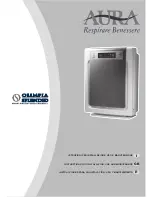
-
229
-
'16 • SCM-T-199
(5) Check of anomalous operation data with the remote
control
(a) In case of RC-E5 remote control
Operation data can be checked with remote control unit
operation.
①
Press the
button.
The display change “
”
②
Press the
(SET) button while “
” is
displayed.
③
When only one indoor unit is connected to remote control,
“
” is displayed (blinking indication during data
loading).
Next, operation data of the indoor unit will be displayed. Skip
to step
⑦
.
④
When plural indoor units is connected, the smallest address
number of indoor unit among all connected indoor unit is
displayed.
[Example]:
“
” (blinking 1 seconds)
→
“
”
blinking.
⑤
Select the indoor unit number you would like to have data
displayed with the
button.
⑥
Determine the indoor unit number with the
(SET)
button.
(The indoor unit number changes from blinking indication to
continuous indication)
“
” (The address of selected indoor unit is blinking for
2 seconds.)
“
” (A blinking indication appears while data loaded.)
Next, the operation data of the indoor unit is indicated.
⑦
Upon operation of the
button, the current operation data is displayed in order from data number 01.
The items displayed are in the above table.
*Depending on models, the items that do not have corresponding data are not displayed.
⑧
To display the data of a different indoor unit, press the
button, which allows you to go back to the indoor unit
selection screen.
⑨
Pressing the
button will stop displaying data.
Pressing the
(RESET) button during remote control unit operation will undo your last operation and allow you to go
back to the previous screen.
If two (2) remote controls are connected to one (1) inside unit, only the master control is available for trial operation and
confirmation of operation data. (The slave remote control is not available.)
Number
01
02
03
04
05
06
07
08
09
10
11
12
21
22
23
24
25
26
27
28
29
30
31
32
33
34
35
36
37
38
39
Data Item
(Operation Mode)
(Set Temperature)
(Return Air Temperature)
(Remote Control Thermistor Tempeature)
(Indoor Heat Exchanger Thermistor / U Bend)
(Indoor Heat Exchanger Thermistor /Capillary)
(Indoor Heat Exchanger Thermistor /Gas Header)
(Indoor Unit Fan Speed)
(Frequency Requirements)
(Response Frequency)
(Pulse of Indoor Unit Expansion Value)
(Total Running Hours of The Indoor Unit)
(Outdoor Air Temperature)
(Outdoor Heat Exchanger Thermistor)
(Outdoor Heat Exchanger Thermistor)
(Compressor Frequency)
(High Pressure)
(Low Pressure)
(Discharge Pipe Temperature)
(Comp Bottom
Temperature)
(Current)
(Target Super Heat)
(Super Heat)
(Discharge Pipe Super Heat)
(Protection State No. of The Compressor)
(Outdoor Unit Fan Speed)
(63H1 On/Off)
(Defrost Control On/Off)
(Total Running Hours of The Compressor)
(Pulse of The Outdoor Unit Expansion Valve EEVC)
(Pulse of The Outdoor Unit Expansion Valve EEVH)
o
















































